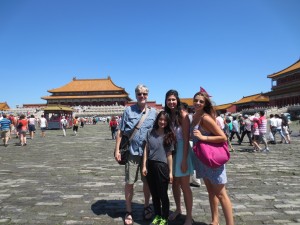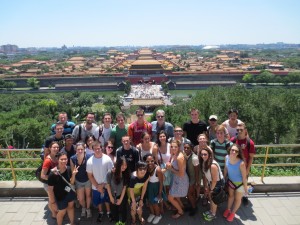In 1406, the Yongle Emperor ordered the construction of the vast array of buildings that would come to be known as the Forbidden City.
Between 1420 and 1911, it served as the imperial palace complex for 14 emperors of the Ming Dynasty, and 10 emperors of the Qing Dynasty. Partly due to the intervention of Zhou Enlai, the Forbidden City avoided the destruction of the Cultural Revolution, and today it is one of China’s foremost tourist sites, with good reason.
We were very fortunate to have a beautiful day of sunshine and blue skies for our tour of this remarkable historic landmark. Such days aren’t terribly common in Beijing, which is known for it’s infamous smog. After making our way through the palace itself, we walked to Jingshan Hill to enjoy a view over the entire complex.
The Forbidden City contains nearly a thousand buildings, and it is over 3,00o feet from north to south, and nearly 2,500 feet from east to west. The north wall is also guarded by a moat, which you can view by clicking on the photo at left and enlarging it.



